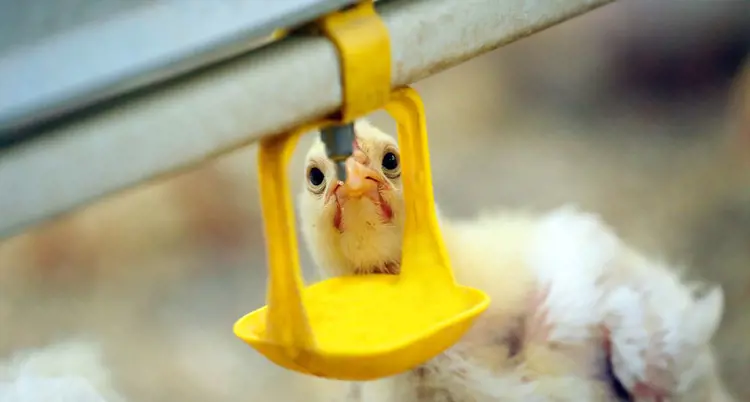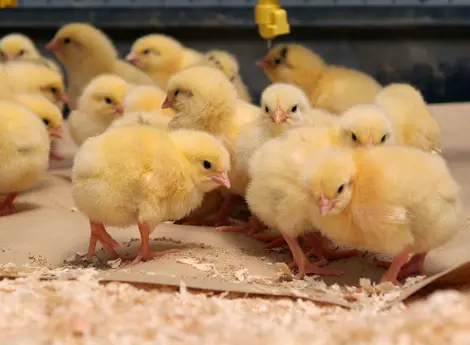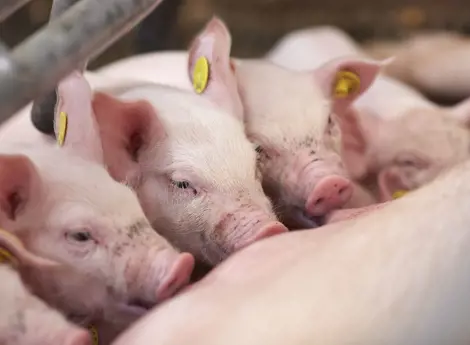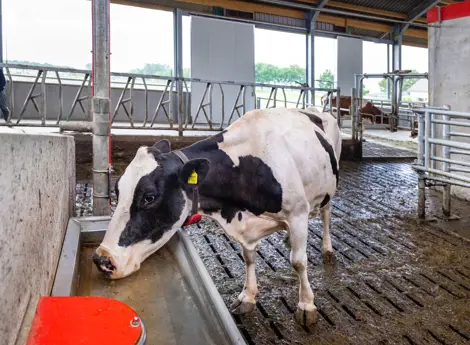Understanding the key role water quality plays in poultry health
Water is an important nutrient for animals, supporting multiple physiological processes. As well as a healthy metabolism, it enables the transportation of nutrients around the body and plays an important role in heat management. Meat and eggs are also largely made up of water.

As a farmer, ensuring your animals have enough good quality drinking water is essential for good performance. Water quality can be assessed in several ways. Once the water quality of the source is determined to be good, specific attention must be paid to potential biofilm development in water pipes, which can impact water quality. The tips below will help you keep your animals’ water clean and hygienic.
As a rule, healthy birds consume an average of 1.75 to 1.80 times more water than feed, meaning the water intake per dozen eggs is typically about 2.6 to 2.8 litres. A broiler needs three litres of water to grow one kilogramme of meat. However, during high environmental temperature conditions, birds can double, triple, or even quadruple their water consumption. It is essential to supply good quality water at the right temperature at each stage of a bird’s life, and it is especially important to provide day-old chicks with access to fresh drinking water on arrival at the farm.
The adjustment of the water system must be such that sufficient water reaches the animals at the right pressure. The optimal water yield per minute is different per species (see ‘Tips and recommendations’ below).
Assessing water quality
Ensuring optimal water quality is important to keep animals healthy and ensure optimal performance. This can be assessed through four different means: visual, sensory (taste/smell), chemical analysis and microbiological analysis. Make sure to test water from the source and at the end of the drinking pipes, as differences can often be observed between both samples.
A visual and sensory assessment is a quick and easy way to obtain an initial indication of your farm’s water quality. It is best done at the place where the animals drink, preferably at the end of the drinking system. In practice, the water quality at the source often differs from that at the drinker. After draining, let the water rest in a bucket or transparent glass for a few minutes and watch for signs of precipitation at the bottom. If the water has a different smell, colour, or taste, then further examination of the drinking water system is necessary.
Chemical analysis indicates whether the water meets the standards for the animal category concerned. In addition to pH and hardness, the content of minerals determines whether the water is suitable. Abnormal levels can negatively affect taste. In addition, overly high levels can cause deposits to form in the system, reducing water supply yields, while excessive concentrations of certain minerals can obstruct the absorption of some others.
Microbiological analysis shows the number of microorganisms at the time of sampling. With an increased concentration of microorganisms, it is important to determine the type of organisms by undertaking a comprehensive analysis. If you find higher levels of microorganisms than are suitable for the animal category, it is necessary to identify the cause of the contamination and take appropriate action. A microbiological contamination is often formed after the water is pumped from the source, as deposits of minerals and organic residues in water pipes (known as biofilm) are an excellent breeding ground for microorganisms. These residues enable germs such as salmonella and E. coli to survive, grow and infect the animals through the drinking water, even when the source water is of sufficient quality.
The importance of regular assessment
It is important to frequently analyse water quality at different points within the system, so that you know the status of the quality of drinking water. To prevent microbiological infections, you should clean the drinking water system regularly. Drinking water additives, such as vaccines, acids, and vitamins, are in many cases based on organic carriers, such as sugars, that contain nutrients for bacteria. Step one is to flush the pipes thoroughly after use. As a second step, cleaning the pipes with the appropriate products is necessary to ensure drinking water hygiene.
Tips and recommendations for poultry
Quality, temperature, and cleaning
- Check the water quality on regular basis (microbiological twice a year; physical-chemical once a year).
- Ensure the supply of clean water at the right temperature at every stage.
- Clean bell drinkers daily.
- Fully clean and disinfect the water system between flocks.
- Use water sanitiser during cycle, if necessary.
New flock
- Check the water system before placing a new flock.
- Flush the pipes shortly before the setup of the day-old chicks. Make sure the water temperature is correct. Young chicks are the most sensitive to poor water quality.
Nipple drinkers
- In broiler farms, adjust the height of the drinkers daily.
- Regularly check the water pressure in the nipple drinkers.
- Nipple drinker flow rate:
o Chicks (0-7 days): 20 ml/min
o Layers: 60-80 ml/min
o Broilers: 70-100 ml/min
A hands-on, targeted approach
Our hands-on, Natural Power, programme will guide you through the different steps needed to optimise water quality for your animals. But that is not all: by bringing together a range of farm management and nutrition approaches, our hands-on, targeted programme will provide you with the tools needed to improve animal health and performance on your farm, supporting the prudent use of antibiotics.
Learn more about the Natural Power programme



